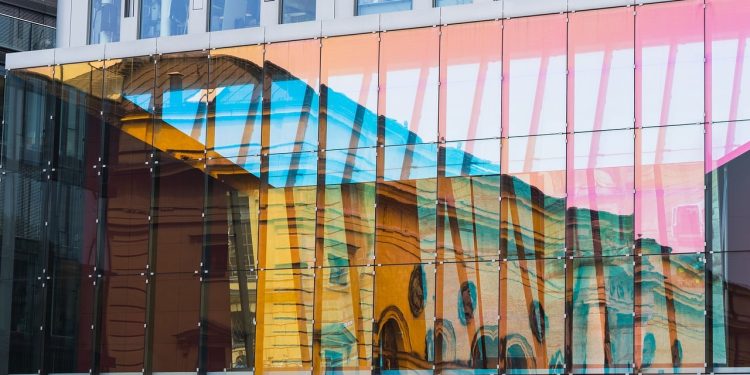London, a city with a history that stretches back millennia, is a true treasure trove for art lovers. Beyond its bustling streets and modern skyline lies a rich artistic heritage, housed in some of the world’s most renowned museums and galleries. These institutions showcase the evolution of human creativity, from ancient artifacts to groundbreaking contemporary art. Whether you are an aficionado of classical European paintings, a fan of modern installations, or interested in the cultural artifacts that tell stories of past civilizations, London’s museums and galleries have something to offer. This guide delves into some of the city’s key artistic destinations, each with its unique contributions to London’s diverse cultural landscape.
The British Museum: A Gateway to the World’s Artistic Past
One cannot speak of London’s artistic heritage without mentioning the British Museum, a grand institution that offers an unparalleled journey through time. Founded in 1753, the museum is home to over eight million artifacts from every corner of the globe, providing a panoramic view of human history, culture, and art. While the museum is perhaps best known for its archaeological treasures, such as the Rosetta Stone and the Elgin Marbles, it also offers a fascinating glimpse into the evolution of visual culture.
The museum’s collection of ancient Greek and Roman sculptures demonstrates the origins of Western art, emphasizing themes of mythology, human beauty, and the divine. The Egyptian Galleries are filled with intricate carvings, jewelry, and statues that reflect the sophistication of ancient Egypt’s artistic endeavors. The beauty of these artifacts lies not only in their craftsmanship but also in their ability to communicate the beliefs and values of societies long gone.
The British Museum also plays a key role in preserving global heritage, showcasing a diverse range of artistic expressions—from African tribal masks to Mesoamerican pottery. These collections highlight the universality of art as a form of expression, transcending geographic and cultural boundaries. Exploring the British Museum is an experience that underscores the importance of art as a bridge between different cultures and epochs.
The National Gallery: A Masterclass in European Painting
Located in Trafalgar Square, the National Gallery is a stunning repository of Western European painting, with over 2,300 works dating from the 13th to the early 20th centuries. For those captivated by classical and Renaissance art, the National Gallery is a must-visit, boasting masterpieces from iconic artists such as Leonardo da Vinci, Michelangelo, Van Gogh, and Rembrandt.
Visitors can trace the evolution of European painting by wandering through its halls, from the luminous religious iconography of Duccio and Giotto to the emotive realism of Caravaggio. One of the gallery’s most famous pieces, Van Gogh’s “Sunflowers”, is a vivid explosion of color that captures the Dutch artist’s emotional depth and unique style. The Renaissance Wing is particularly captivating, with works by Botticelli and Raphael that showcase the rebirth of artistic techniques and humanistic themes during this transformative period.
The National Gallery offers more than just a collection of beautiful paintings; it provides insight into the cultural and historical contexts that shaped European society. The gallery’s exhibits demonstrate how art evolved in response to changes in politics, religion, and society, creating a visual narrative that resonates with viewers from all walks of life. The National Gallery is a testament to the power of art in shaping cultural identity and understanding the human condition.
Tate Modern: The Bold Frontier of Contemporary Art
For those drawn to modern and contemporary art, Tate Modern offers a completely different experience. Housed in a converted power station on the banks of the Thames, Tate Modern is one of the most visited art galleries in the world, showcasing an impressive collection of 20th and 21st-century works. The gallery’s industrial architecture provides a dramatic backdrop for a range of artistic styles—from abstract expressionism to pop art, conceptual pieces, and immersive installations.
Tate Modern’s collection includes works by the most influential artists of the modern era, including Pablo Picasso, Salvador Dalí, Mark Rothko, and Andy Warhol. The Turbine Hall, a massive open space at the heart of the gallery, regularly hosts large-scale installations that push the boundaries of what art can be. These installations are often interactive, inviting visitors to become a part of the art itself, thereby blurring the lines between artist, artwork, and audience.
One of the standout exhibits is Louise Bourgeois’ “Maman”, a giant steel spider that stands as both a symbol of strength and vulnerability. Works by Anish Kapoor and Yayoi Kusama are also popular, often eliciting strong emotional reactions from viewers through their bold use of color and space. Tate Modern is an ever-changing space that challenges visitors to rethink their definitions of art, making it a critical part of London’s artistic landscape.
The Victoria and Albert Museum: Where Art and Design Meet
The Victoria and Albert Museum (V&A) is a celebration of art and design in all its forms. Founded in 1852, the V&A holds over 2.3 million objects, ranging from fashion and textiles to ceramics, furniture, and jewelry. The museum’s eclectic collection highlights the role of art in everyday life, showcasing how beauty and functionality can intersect across different cultures and periods.
The Fashion Gallery at the V&A is particularly popular, offering an overview of how clothing design has evolved over the centuries, from ornate 18th-century gowns to modern couture by designers like Alexander McQueen. The museum also features impressive collections of Islamic art, East Asian ceramics, and Renaissance sculptures, each illustrating the cultural exchanges that have shaped artistic traditions around the world.
One of the most striking sections of the museum is the Cast Courts, which feature plaster casts of some of Europe’s most famous sculptures, including Michelangelo’s David and the Trajan’s Column. These casts were created during the 19th century to make great works of art accessible to those unable to travel. Today, they serve as a reminder of the enduring value of art in inspiring curiosity and cross-cultural understanding.
Saatchi Gallery: A Platform for Emerging Talent
For those interested in the cutting edge of contemporary art, the Saatchi Gallery offers a dynamic space for discovering emerging artists. Founded by advertising magnate Charles Saatchi in 1985, the gallery has a reputation for showcasing provocative and innovative works, often giving a platform to artists who are on the brink of gaining international acclaim.
The Saatchi Gallery’s exhibitions are ever-changing, featuring artists from around the world who use a wide range of media, from painting and sculpture to digital art and performance. The gallery has helped launch the careers of some of the most famous figures in contemporary British art, including Damien Hirst and Tracey Emin. Visitors to the Saatchi Gallery can expect to see works that challenge convention, provoke thought, and push the boundaries of what art can communicate.
The Wallace Collection: Intimacy and Opulence
For those who appreciate art in a more intimate setting, The Wallace Collection is an absolute delight. Housed in a historic London townhouse, this lesser-known gem offers a glimpse into the opulent lifestyle of 18th and 19th-century Europe. The collection includes an array of paintings, porcelain, furniture, and armor, all displayed in beautifully decorated rooms that evoke the grandeur of a bygone era.
The gallery’s highlights include works by Frans Hals, Rembrandt, and Jean-Honoré Fragonard. Fragonard’s “The Swing,” with its playful subject matter and delicate brushwork, is perhaps the collection’s most iconic piece, embodying the romanticism and indulgence of the Rococo period. Unlike many of London’s larger museums, the Wallace Collection retains an intimate atmosphere, allowing visitors to engage with the art in a personal and leisurely manner.
Whitechapel Gallery: A Beacon of East London Creativity
Located in the vibrant East End, the Whitechapel Gallery has been an integral part of London’s cultural landscape since 1901. Known for its commitment to contemporary art and community engagement, the gallery has hosted groundbreaking exhibitions by artists such as Pablo Picasso, Frida Kahlo, and Jackson Pollock. Today, it continues to serve as a platform for both established and emerging artists, with a focus on innovative and socially engaged works.
The Whitechapel Gallery’s location in the heart of East London places it in one of the city’s most culturally diverse areas, and this diversity is often reflected in its programming. The gallery’s exhibitions frequently address pressing social issues, using art as a medium to foster dialogue and understanding. The Archive Gallery also offers fascinating insights into the history of the gallery and its role in shaping London’s contemporary art scene.
A Journey Through Time and Imagination
Exploring the artistic heritage of London’s museums and galleries is an opportunity to journey through time, across continents, and into the minds of some of history’s most creative individuals. From the classical masterpieces of the National Gallery to the cutting-edge installations at Tate Modern, London’s art institutions cater to every taste and interest, making the city a true haven for art enthusiasts. These museums and galleries are more than just places to view art; they are spaces for reflection, inspiration, and connection—an invitation to explore the limitless boundaries of human creativity.
















